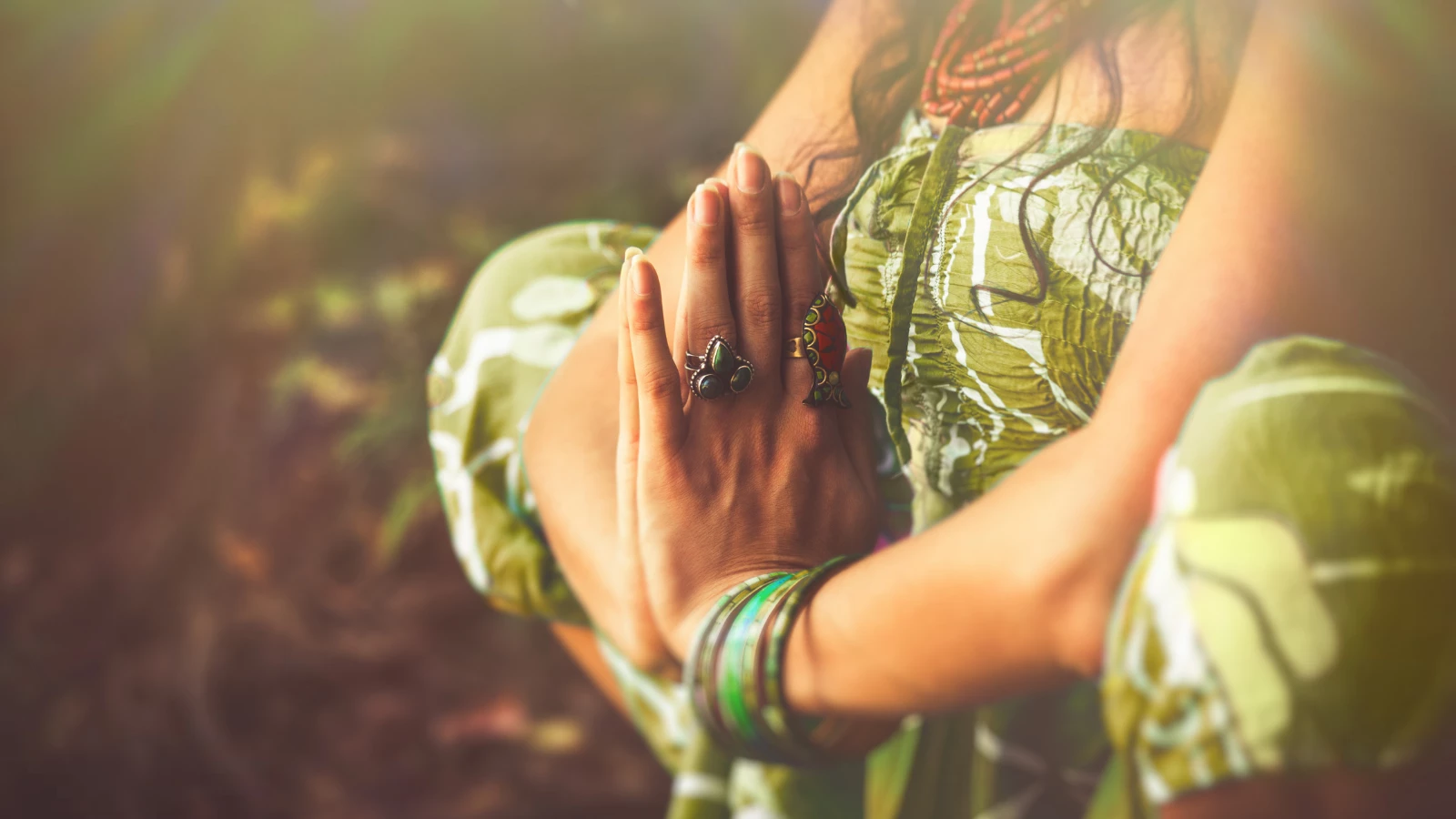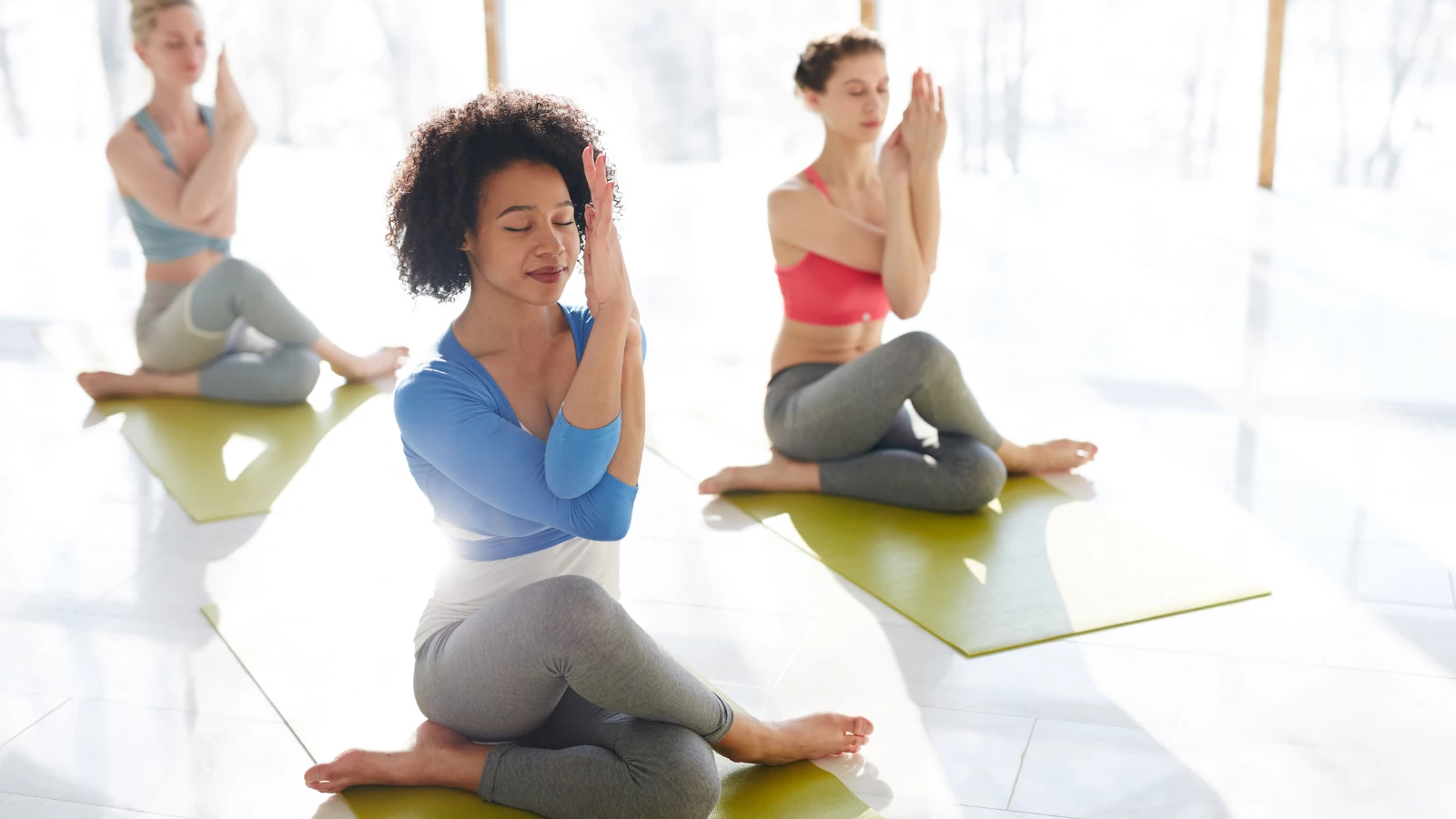The Chakras: Guides on the Yogic Path

Most of us have encountered the concept of chakras at some point on our yoga journey. Some of us have a solid knowledge of the origins and traditional meanings. But many of us may be wondering if the chakras have relevance to our yoga practice and the issues we deal with every day.
My answer to that question is an unequivocal “yes!” Over the next several posts, I’ll share what I’ve learned about the chakras as a useful model, or lens, through which to view ourselves, our lives, and our world. I’ve chosen to present a contemporary view because I’ve found it to be relevant, helpful, and beneficial for myself and many of my students.
Contemporary viewpoints need to be sourced from history because history provides context, and context gives us a foundation on which to build a contemporary view. Then we can learn how to view the chakra system as a useful tool for living through tough times, and with the ongoing pandemic and social, environmental, political, and racial unrest, we need all the tools we can get!
Physical Anatomy and Energy Anatomy
The chakras are an integral part of our energy anatomy, which includes the nadis, pranavayus, and auras. This energy anatomy is not physical, but it does intersect with and impact our physical body and the mental, emotional, and spiritual aspects that exist within us. The existence, activity, and relevance of subtle energy fields to our health and wellbeing is not a new idea to students of ancient wisdom traditions, but they are only beginning to be explored by modern science. Here are two quotes that illustrate this. The first is from Nikola Tesla, a 19th-century engineer and scientist:
“If you want to find the secrets of the universe, think in terms of energy, frequency, and vibration.”
The next is from Albert Einstein, the legendary theoretical physicist:
“Energy cannot be created or destroyed, it can only be changed from one form to another.”
Therefore, our mission, if we choose to accept it, is to deepen our understanding of the relationship between our physical body and our energy anatomy (they are actually one and the same but we don’t need to get too wonky here) to inform, enhance, and deepen our yoga practice and use that awareness to change our reactions and responses to life and all it brings.

What Are the Chakras?
Are the chakras real? There is no hard scientific evidence. A pathologist can perform an autopsy to locate and dissect all of our physical parts but will not find or be able to dissect the chakras. Interestingly, several authors and teachers have proposed a relationship between the chakras and our endocrine system. Acceptance of the chakras and the relationships that connect them will depend on your openness to the reality and relevance of a philosophical and psychological model that you cannot see, touch, smell, hear, or taste. (Well, some people claim to be able to “see” chakras, but that’s a subject for someone else to tackle).
Many different chakra systems exist. They vary in numbers, colors, symbols, and location. How many? Take your pick. There are five-chakra systems, six-chakra systems, seven, nine, ten, fifteen, twenty-one, twenty-eight, and more depending on the source you are researching.
For the purpose of this article, I’ll be referring to the system that describes seven energy centers located at different points in the body along the spinal column. These chakras, their locations, and endocrine system connections are said to be:
- Muladhara: Root chakra, between the perineum and the pelvic bone—Adrenals
- Svadhisthana: Sacral chakra, four fingers width below the navel—Gonads/reproductive glands
- Manipura: Solar plexus chakra, in the abdomen above the navel—Pancreas
- Anahata: Heart chakra, center of the chest—Heart/Thymus
- Vishuddha: Throat chakra, neck/throat—Thyroid/Parathyroid
- Ajna: Third eye chakra, centered between the eyebrows—Pineal/Pituitary
- Sahasrara: Crown chakra, top of the head—Pineal
How the Chakras Affect Our Lives
Anodea Judith, Ph.D., has written numerous books on the subject. My favorite is Eastern Body, Western Mind. In it, she offers a useful analogy of human beings as biocomputers. In this analogy, our body is the hardware, the chakras are software that hold vital programming (helpful and unhelpful), prana (life force energy) is what powers the entire system, and we are the users. Each chakra contains a different program for issues such as survival, sexuality, self-actualization, love and compassion, communication, intuition, and spirituality.
Another favorite contemporary source is Carolyn Myss, Ph.D., and author of Anatomy of the Spirit. She too describes each chakra as related to a life lesson similar to those discussed in Judith’s book. The first three are related to moving through the external world with our survival skills, sexuality, ego, personality, and self-esteem. Chakras four, five, six, and seven deal with our internal self-awareness, wisdom, and spiritual development.
How the Chakras Integrate with Yoga Practices
When we recognize a problem on any level or in any area of our lives, we can use the chakras as guides to help us understand the who, what, when, where, how, and why of our issues, beliefs, habits, and behavior before we take action to address them.
The art and science of yoga offer a wide variety of practices to work with the chakras:
- Yamas and niyamas (ethics and actions)
- Asana
- Pranayama
- Guided imagery
- Mudra
- Meditation
- Chanting and affirmations
Over the next several posts, I’ll explore the chakras from root to crown with suggestions for recognizing the issues and lessons contained within them and then from crown to root as we consider ways to respond to our current reality. My focus will be on practical applications to our yoga practice and our lives.
Also, read...
The Yoga Sutras: Practicing Non-Attachment without Becoming Detached
The Broomstick Effect: The #1 Key to Perfecting Balancing Yoga Postures
Related courses
Breath as Medicine: Yogic Breathing for Vital Aging
Yoga and Myofascial Release: Releasing Chronic Tension with the Bodymind Ballwork Method

Beth Gibbs, MA, is a faculty member at the Kripalu School of Integrative Yoga Therapy. She holds a master’s degree in Yoga Therapy and Mind/Body Health from Lesley University in Cambridge, MA. She is the author of Soul Food, Life-Affirming Stories Served with Side Dishes and Just Desserts, Enlighten Up! Finding Clarity, Contentment, and Resilience in a Complicated World and Ogi Bogi, The Elephant Yogi, a therapeutic yoga book for children. Beth is an experienced workshop leader and public speaker. She blogs at bethgibbs.com



